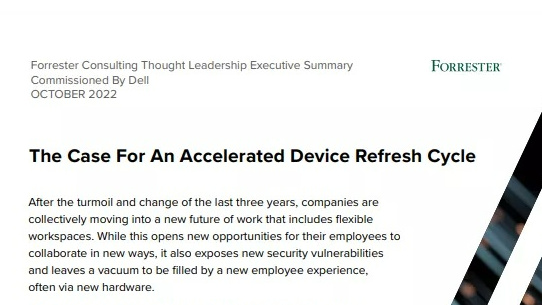Collaboration: What does it mean today?
Collaboration has been around since the dawn of man, but recent developments have made it easier and more effective than ever

People are born collaborators in fact, we've evolved to collaborate. Our communication skills and ability to work together have taken us from the savannahs of Africa to the outer solar system. Collaboration has given us virtually everything, from our ability to avoid famine using agriculture to amazing works of art.
Collaboration today, though, is going into overdrive thanks to the development of more and more tools that help us collaborate more effectively. And, in fact, collaboration matters now more than ever, in business and the rest of your life.
Mass collaboration
If humans have always collaborated, what has recently changed? To put it simply, the internet has enabled a new era of mass collaboration. Take the example of Canadian gold mining company Goldcorp. In 2007, frustrated by a lack of progress in using the data the company had about geological features to find new gold prospects, it published all of its data online and started the "Goldcorp Challenge". This was, effectively, a competition: using the Goldcorp dataset, people were free to submit methods and estimates for finding a claim. The best submissions could win prizes, with over $525,000 available.
The results were impressive. Over 1,000 entries from all over the world ultimately led to more than $3bn of new finds for Goldcorp. By opening itself up to external collaborators, Goldcorp made itself a lot of money and all of this was made possible by the internet.
Personal collaboration
If this kind of large-scale collaborative effort is at one end of the scale, the tools we use when collaborating in person have also changed significantly.
A good example of this is Alphr's own workflow. Every morning, the team meets to pitch ideas for stories that day, and update each other on what's happening. This is a face-to-face meeting so you'd imagine that the use of technology would also be pretty limited.
In fact, the team uses Microsoft OneNote to take notes and work collaboratively on them during the meeting. Alphr has a shared OneNote notebook that includes a tab for the daily meetings. As the meeting is in progress, each team member will add their own ideas into the note for the meeting, rather than relying on a single note-taker. The updates are live, and the note is shared in real time, so everyone has the same record of the meeting.
Sign up today and you will receive a free copy of our Future Focus 2025 report - the leading guidance on AI, cybersecurity and other IT challenges as per 700+ senior executives
This level of live collaboration happens when creating content, too. All our content starts its life in Google Docs, and stories are often worked on in real time by both the author and an editor, who might add comments and questions about the piece while the author is still completing the article.
And our collaboration doesn't end when the story is posted online. In fact, often that's when the biggest stage of collaboration really starts with the audience for the site. Despite being published, no story (including this one) is ever truly finished: we pay attention to comments on the site and incorporate answers to questions and suggestions for improvements back into new revisions of the article.
And, in a sense, this gets back to the heart of the changes that collaboration is making to work today. For many businesses, and not just publishers, collaboration is now something that involves their customers as much as anyone else. If collaboration has been an integral part of what it is to be human, then the tools we're creating today to help us collaborate more effectively both with huge numbers of people around the globe and face-to-face are making business even more human.
Five tips for better collaboration
1. Always be a good example yourself. If you're a manager, you need to lead by example as much as possible. Make yourself the best collaborator in the business, and make sure that you involve everyone as much as possible.
2. Have the right tools and spaces for collaboration. For face-to-face collaboration, tools are important whether they're advanced ones such as a digital whiteboard or as simple as plenty of coloured pens. But you also need spaces that people can use for informal collaboration. If you have a few meeting rooms that are always booked, you're making it harder for people to collaborate effectively.
3. Keep experimenting. Every year sees new tools and methods for collaborative working appear. Don't allow yourself to become stuck in a rut always keep trying new things. Not only will this give you a competitive advantage, it will prevent your employees or co-workers from becoming bored.
4. Listen as much as you speak. One of the basics, but something that is often forgotten: good collaborators always listen as much as they speak. If you're dominating the conversation, you're broadcasting, not collaborating.
5. Remember that collaboration takes time. Turning your business into a collaborative enterprise won't happen overnight. If your company culture isn't collaborative, it can take a while before you get it right. Don't expect miracles!
"This is an independent guide from the Alphr editorial team. This content was produced to the same impartial standards as the main content on our site, but paid for by SMART kapp because they like people who like this topic. Thank you, SMART kapp!"
-
 Google is scrapping its dark web report feature
Google is scrapping its dark web report featureNews Google said while the dark web report feature offered “general information”, the tool didn’t provide “helpful next steps” for users potentially impacted by a breach.
-
 AI means you're probably going to need bigger developer teams
AI means you're probably going to need bigger developer teamsAnalysis Software developers may be forgiven for worrying about their jobs in 2025, but the end result of AI adoption will probably be larger teams, not an onslaught of job cuts.
-
 'Digital hide-and-seek': Workers are wasting hundreds of hours a year sourcing the information they need to carry out their role
'Digital hide-and-seek': Workers are wasting hundreds of hours a year sourcing the information they need to carry out their roleNews Knowledge workers globally are wasting a quarter of their working week tracking down information, new research from Atlassian has revealed.
-
 Untethered: How CIOs and CISOs are paving the way for the new hybrid workforce
Untethered: How CIOs and CISOs are paving the way for the new hybrid workforceWhitepaper Effective techniques to transition from exposed legacy infrastructure to an effective zero trust strategy
-
 Unlocking the power of your digital services
Unlocking the power of your digital servicesSponsored Businesses have invested significant cash into technology since COVID-19, but are they really getting their money's worth?
-
 Delivering fast and secure digital experiences for the modern hybrid workforce
Delivering fast and secure digital experiences for the modern hybrid workforceWhitepaper A new approach to digital experience monitoring that can monitor the health of all systems
-
 Collaboration is the glue that holds your business together
Collaboration is the glue that holds your business togetherSPONSORED A combination of productivity tools and cloud telephony can enable the best from your workforce
-
 The future of work and the forgotten workforce
The future of work and the forgotten workforcewhitepaper How to deploy a mobile-first strategy so no one gets left behind
-
 The case for an accelerated device refresh cycle
The case for an accelerated device refresh cycleWhitepaper Achieving a more cost-effective device lifecycle overall
-
 Employees are choosing how they work
Employees are choosing how they workWhitepaper And with the right secure digital strategy, this could be a great thing for your business: today and far into the future